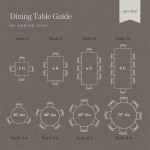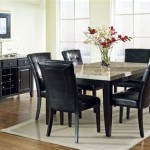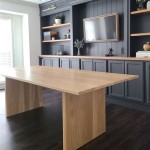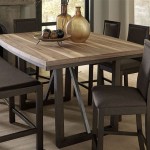Lights For Above Pool Table: A Comprehensive Guide
Proper illumination is paramount to enjoying a game of pool. Lighting not only enhances visibility but also contributes significantly to the overall ambiance and aesthetic appeal of a game room. Specifically, the lighting above a pool table must be carefully considered to ensure optimal play and prevent eye strain. This article delves into the critical elements of pool table lighting, covering fixture types, positioning, brightness, color temperature, and relevant regulations. Understanding these factors helps in selecting the most suitable lighting solution for a particular space.
The primary goal of pool table lighting is to provide uniform, glare-free illumination across the playing surface. Insufficient or poorly positioned lighting can lead to shadows, uneven light distribution, and distracting reflections, all of which can negatively impact a player's ability to accurately aim and execute shots. Conversely, overly bright or improperly shielded lights can cause eye fatigue and discomfort. Finding the right balance between brightness, color temperature, and fixture design is essential for creating an enjoyable and functional playing environment.
Key Considerations for Pool Table Lighting
Selecting the appropriate lighting for a pool table involves several important considerations. These range from the physical dimensions of the table and the surrounding room to the desired aesthetic and regulatory compliance.
Firstly, the size of the pool table dictates the necessary level of illumination. A larger table requires a greater light output to ensure adequate coverage across the entire playing surface. The distance between the light fixture and the table also plays a crucial role; higher ceilings necessitate more powerful lights to compensate for the increased distance. Furthermore, the room's dimensions affect the overall brightness and light distribution, requiring consideration of ambient lighting and reflective surfaces.
Secondly, the type of light fixture significantly impacts the quality and direction of light. Common options include pendant lights, linear lights, and dedicated pool table lights. Each type offers unique advantages and disadvantages in terms of light dispersion, aesthetic appeal, and installation requirements. Pendant lights, for example, typically provide focused illumination, while linear lights offer a more diffused and even spread of light. Dedicated pool table lights are specifically designed to meet the lighting requirements of the game, often incorporating features such as adjustable height and integrated shades.
Thirdly, regulatory compliance is a critical aspect often overlooked. Building codes and electrical regulations often stipulate specific requirements for lighting installations, including safety standards and energy efficiency considerations. It is essential to consult with a qualified electrician or lighting professional to ensure that the chosen lighting solution meets all relevant regulations and safety guidelines. Compliance not only ensures the safety of users but also helps to avoid potential fines or penalties.
Types of Pool Table Lighting Fixtures
The market offers a diverse range of lighting fixtures suitable for illuminating pool tables. Each type possesses unique characteristics that cater to different preferences and functional requirements. Understanding the nuances of each option is vital for making an informed decision.
Pendant Lights: Pendant lights are arguably the most common type of pool table lighting. Typically suspended from the ceiling by a chain or rod, pendant lights provide focused illumination downwards. They are available in a variety of styles, from traditional to modern, allowing for seamless integration with diverse interior designs. The number of pendants required usually depends on the size of the pool table; a common configuration involves three pendants evenly spaced above the table. Advantages include ease of installation and a wide selection of designs. Disadvantages include the potential for uneven light distribution and the need for precise positioning to avoid shadows.
Linear Lights: Linear lights, also known as bar lights, consist of a single, elongated fixture that spans the length of the pool table. They offer a more diffused and even spread of light compared to pendant lights, reducing the likelihood of shadows and glare. Linear lights are particularly well-suited for modern and contemporary game rooms. They often incorporate multiple light sources within a single housing, allowing for adjustable brightness and color temperature. Advantages include uniform illumination and a sleek aesthetic. Disadvantages include higher initial cost and potentially more complex installation.
Dedicated Pool Table Lights: Dedicated pool table lights are specifically engineered to meet the unique lighting requirements of the game. These fixtures often feature adjustable height, integrated shades, and optimized light output to ensure optimal visibility. They are designed to minimize glare and shadows, providing a comfortable and functional playing environment. Dedicated pool table lights are available in a variety of styles, ranging from traditional brass fixtures to modern LED designs. Advantages include superior light quality and ease of adjustment. Disadvantages include a potentially higher price point and a more specialized appearance.
Recessed Lighting: While not as common as pendant or linear lights, recessed lighting can be used in conjunction with other fixtures to provide supplementary illumination. Recessed lights are installed flush with the ceiling, providing a clean and unobtrusive appearance. They are particularly useful for illuminating the perimeter of the room and reducing contrast between the pool table and the surrounding environment. Advantages include a sleek aesthetic and efficient use of space. Disadvantages include limited directional control and the potential for glare if not properly positioned.
Factors Affecting Lighting Performance
The performance of pool table lighting depends on several interconnected factors, including brightness, color temperature, and positioning. Optimizing these factors is crucial for achieving optimal visibility and a comfortable playing experience.
Brightness (Luminosity): Brightness, measured in lumens, refers to the total amount of light emitted by a light source. The appropriate level of brightness for a pool table depends on the size of the table, the height of the ceiling, and the ambient lighting conditions. Generally, a pool table requires between 2000 and 3000 lumens to provide adequate illumination. Insufficient brightness can lead to eye strain and difficulty focusing, while excessive brightness can cause glare and discomfort. Adjustable brightness controls allow players to customize the light output to suit their individual preferences and playing conditions.
Color Temperature: Color temperature, measured in Kelvin (K), describes the "warmth" or "coolness" of a light source. Lower color temperatures (e.g., 2700K) produce a warm, yellowish light, while higher color temperatures (e.g., 5000K) produce a cool, bluish light. For pool tables, a color temperature between 3000K and 4000K is generally recommended. This range provides a neutral white light that accurately renders colors and minimizes eye strain. Avoid excessively warm or cool light, as it can distort colors and create an uncomfortable playing environment.
Positioning and Height: The position and height of the light fixture are critical for ensuring even light distribution and minimizing shadows. Ideally, the light fixture should be centered above the pool table and positioned at a height that prevents glare and provides ample clearance for players. A general rule of thumb is to position the bottom of the light fixture approximately 30 to 36 inches above the playing surface. However, this height may need to be adjusted depending on the ceiling height and the specific characteristics of the light fixture. Experimentation is often necessary to find the optimal position that provides the best combination of brightness, uniformity, and comfort.
Glare Control: Glare is a significant concern in pool table lighting, as it can cause eye strain and impair visibility. To minimize glare, choose light fixtures with integrated shades or diffusers that direct light downwards and prevent it from shining directly into players' eyes. Matte finishes on the fixture and surrounding surfaces can also help to reduce glare. Additionally, consider the positioning of other light sources in the room to avoid reflections on the pool table surface.
Selecting the Right Bulbs
The type of bulb used in a pool table light fixture significantly impacts the light quality, energy efficiency, and lifespan of the fixture. Common bulb options include incandescent, halogen, fluorescent, and LED bulbs. Each type offers distinct advantages and disadvantages.
Incandescent Bulbs: Incandescent bulbs are the traditional choice for lighting fixtures. They produce a warm, pleasant light that is generally considered to be aesthetically pleasing. However, incandescent bulbs are relatively inefficient and have a short lifespan compared to other options. They also generate a significant amount of heat, which can be a concern in enclosed spaces. Due to their inefficiency, incandescent bulbs are being phased out in many regions in favor of more energy-efficient alternatives.
Halogen Bulbs: Halogen bulbs are similar to incandescent bulbs but offer improved energy efficiency and a longer lifespan. They produce a bright, white light that is well-suited for task lighting. However, halogen bulbs still generate a significant amount of heat and are not as energy-efficient as LED bulbs. They also require special handling due to their potential to shatter when broken.
Fluorescent Bulbs: Fluorescent bulbs, including compact fluorescent lamps (CFLs), are more energy-efficient than incandescent and halogen bulbs. They produce a diffused light that is well-suited for general illumination. However, fluorescent bulbs contain mercury, which requires special disposal procedures. They also have a longer warm-up time compared to other options and may not be suitable for dimming.
LED Bulbs: LED (Light Emitting Diode) bulbs are the most energy-efficient and long-lasting option for pool table lighting. They produce a bright, white light that is comparable to halogen bulbs but consume significantly less energy. LED bulbs are also available in a wide range of color temperatures, allowing for customization to suit individual preferences. They do not contain mercury and have a very long lifespan, reducing the need for frequent replacements. While LED bulbs may have a higher initial cost, their long lifespan and energy efficiency make them a cost-effective choice in the long run.
When selecting bulbs for a pool table light fixture, prioritize energy efficiency, light quality, and lifespan. LED bulbs are generally the best choice due to their superior performance in these areas. Consider the color temperature and brightness of the bulb to ensure optimal visibility and a comfortable playing environment.
In summary, selecting the right lighting for above a pool table requires careful consideration of various factors, including fixture type, brightness, color temperature, and regulatory compliance. Understanding these factors allows for the creation of a well-lit and enjoyable playing environment.

Vintage Pool Billiard Snooker Table Light Pendant Lights Lamp Bar Chandelier Ebay

Springdale Billiards Pool Table Tiffany Island Hanging Fixture

Buy 9ft Perimeter Led Billiard Pool Table Light Modern Design Game Room Pendant Chandelier Online In Etsy

Pool Table Lighting Photos Designs Ideas

25 Cool Pool Table Lights To Illuminate Your Game Room Sebring Design Build

Pool Table Light Placement Dynamic Billiard Mississauga

10ft Modern Snooker Carom Table Lights Perimeter Billiard

20 Awesome Pool Table Lighting Home Design Lover

7ft 8ft 9ft Modern Led Pool Table Lighting Perimeter Billiard Lights Ebay

How High Should Lights Hang Over A Billiards Table Canadian Home Leisure








